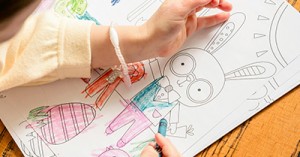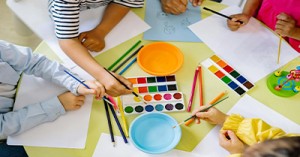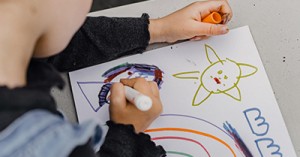Use ice to paint with in this activity.
Materials Needed:
- A tray/container.
- A4 sheet of paper.
- Powdered paint/jelly crystals’/food colouring mixed with water and freeze overnight.
What to do:
- Pre-make coloured ice cubes the previous night.
- Once frozen add the ice-cubes into a bowl.
- Place the ice-cubes in front of baby and encourage them to touch them or try to pick them up.
- If baby is hesitant to try, pick up an ice cube and offer it to baby.
- Lay a piece of paper down in front of baby and show baby how to draw with the ice cubes.
- Pushing the ice-cube along the paper will be sufficient enough to create a painting as they begin to melt.
- Hang paper to dry.
- Wash baby’s hands.
Hints and Tips:
- When making the ice cubes for this activity, add some food colouring, mixed with water into the ice cube tray itself. Freeze.
- Do this activity in a warm room so the ice cubes melt faster.
- If the colouring won’t appear on the paper, add more colouring to the ice.
- Always watch your baby during this activity in case of choking.
- Talk about ice, how it feels, what happens when it melts. Baby may not understand but increases their vocabulary.







